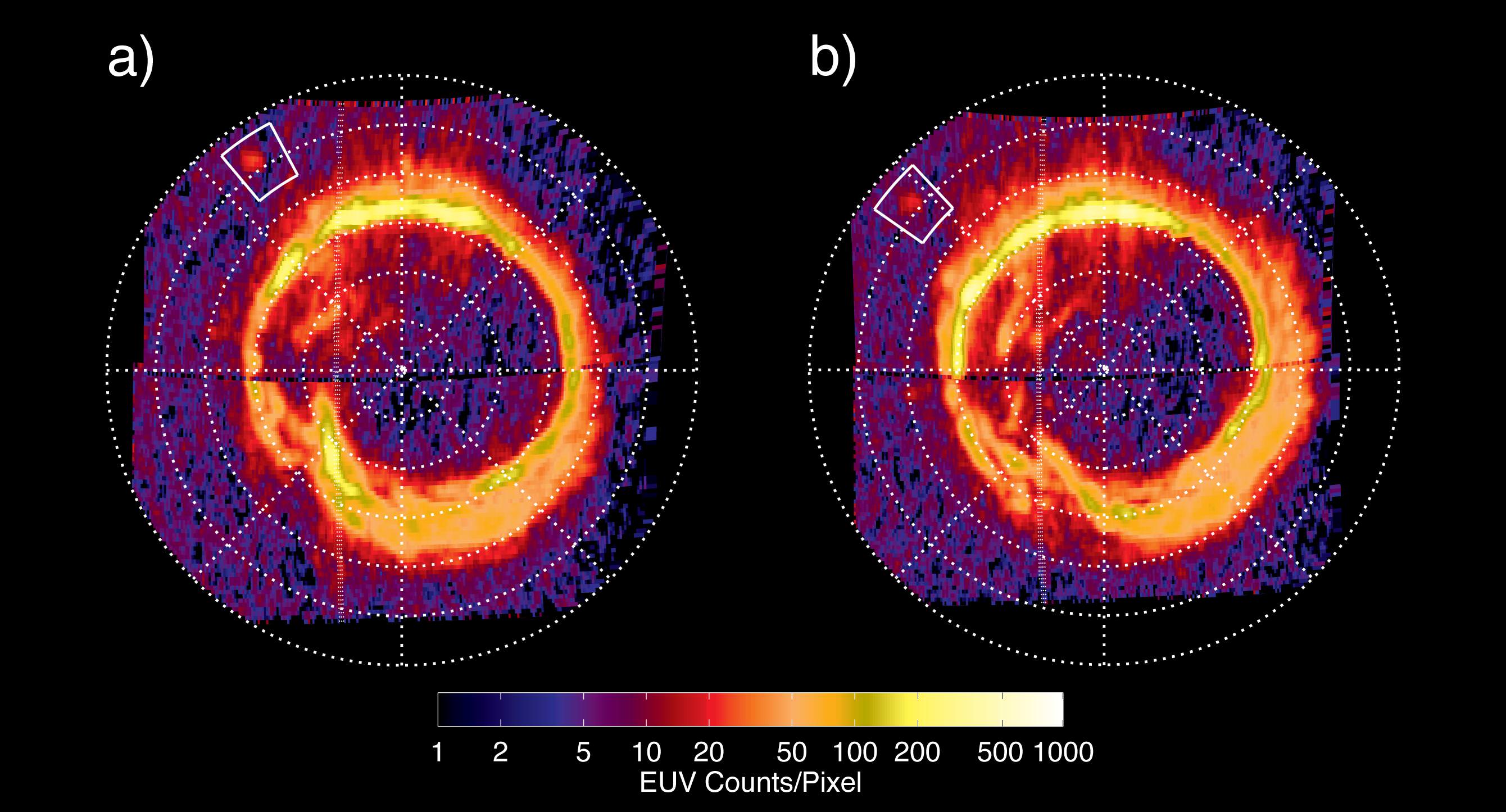[/caption]
The geysers and jets of Enceladus have just become more intriguing. A glowing patch of ultraviolet light near Saturn's north pole appears to be evidence of a magnetic connection between the planet and the icy, geyser-spewing moon. Data from the Cassini spacecraft have revealed that the jets of gas and icy grains that emanate from the south pole of Enceladus become electrically charged and form an ionosphere, and the motion of Enceladus and its ionosphere through a magnetic bubble that surrounds Saturn acts like a dynamo, setting up a newly-discovered electrical current system that links the moon to the planet.
This video demonstrates the hiss-like radio noise generated by electrons moving along magnetic field lines from Enceladus to a glowing patch of ultraviolet light on Saturn.
Cassini's Plasma Spectrometer's electron spectrometer, (CAPS-ELS) has detected the beams of electrons that flow back and forth between Saturn and Enceladus. Magnetic field lines, invisible to the human eye but detectable by the fields and particles instruments on the spacecraft, arc from Saturn's north polar region to south polar region. Enceladus resides in the arc of a set of the field lines and feeds charged particles into the Saturn atmosphere. The finding is part of a paper published in Nature.
From data Cassini collected in 2008, scientists saw a glowing patch of ultraviolet light emissions near Saturn's north pole that marked the presence of a circuit between the two bodies, even though the moon is 240,000 kilometers (150,000 miles) away from the planet.
The patch occurs at the end of a magnetic field line connecting Saturn and its moon Enceladus. The area, known as an auroral footprint, is the spot where energetic electrons dive into the planet's atmosphere, following magnetic field lines that arc between the planet's north and south polar regions.
"The footprint discovery at Saturn is one of the most important fields and particle revelations from Cassini and ultimately may help us understand Saturn's strange magnetic field," said Marcia Burton, a Cassini fields and particles scientist at NASA's Jet Propulsion Laboratory. "It gives us the first visual connection between Saturn and one of its moons."
The auroral footprint measures approximately 1,200 kilometers (750 miles) by less than 400 kilometers (250 miles), covering an area comparable to California or Sweden. At its brightest, the footprint shone with an ultraviolet light intensity far less than Saturn's polar auroral rings, but comparable to the faintest aurora visible at Earth without a telescope in the visible light spectrum. Scientists have not found a matching footprint at the southern end of the magnetic field line.
Scientists already knew that the giant planet Jupiter is linked to three of its moons by charged current systems set up by the satellites orbiting inside its giant magnetic bubble, the magnetosphere, and that these current systems form glowing spots in the planet's upper atmosphere. The latest discovery at Enceladus shows that similar processes take place at the Saturnian system too.
"This now looks like a universal process -- Jupiter's moon Io is the most volcanic object in the solar system, and produces a bright spot in Jupiter's aurora, " said Dr. Andrew Coates from the University College in London, a co-author of the new paper. "Now, we see the same thing at Saturn -- the variable and majestic water-rich Enceladus plumes, probably driven by cryovolcanism, cause electron beams which create a significant spot in Saturn's aurora too."
Paper:
Wayne R. Pryor et al, "The auroral footprint of Enceladus on Saturn", Nature, 472, 331–333, doi:10.1038/nature09928
Sources:
University College, London
,
NASA
 Universe Today
Universe Today
